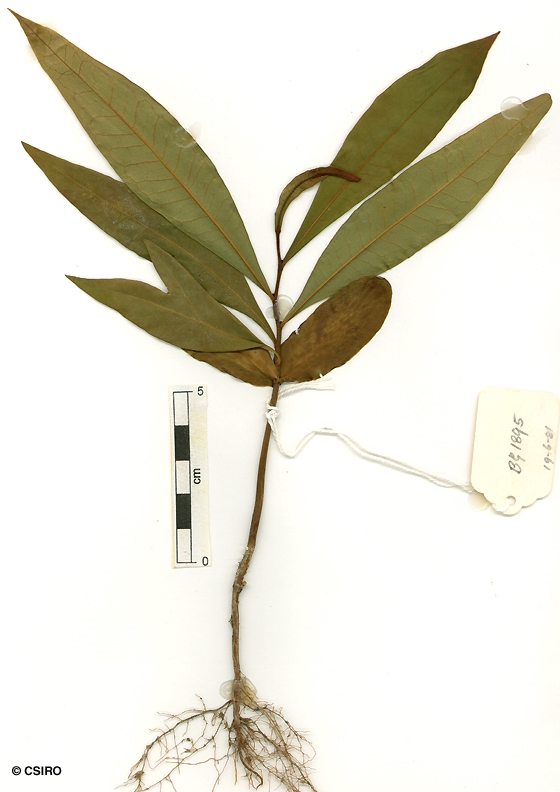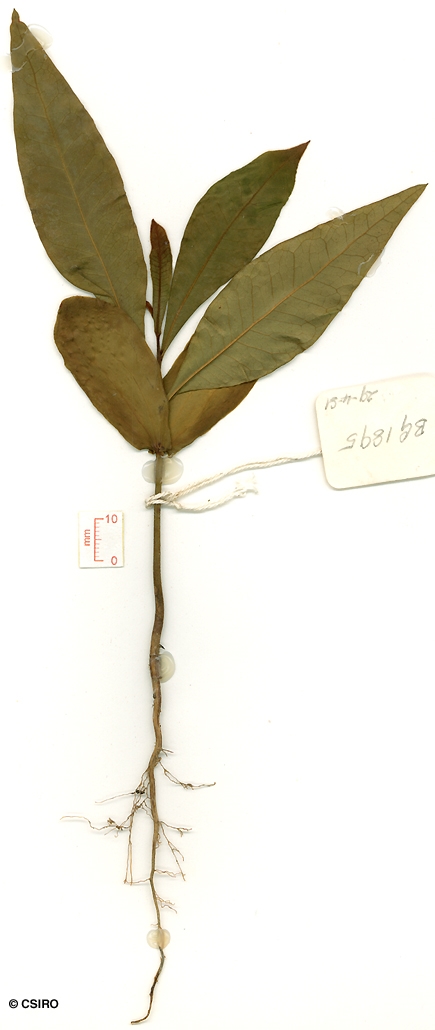Australian Tropical Rainforest Plants - Online edition
Darlingia ferruginea J.F.Bailey





Bailey, J.F. (1899) Queensland Agricultural Journal 5(4): 402. Type: Evelyn district, June - July 1899, J. Bailey s. n., holo: BRI.
Rose Silky Oak; Brown Silky Oak; Oak, Silky Rose; Oak, Silky; Silky Oak; Oak, Rusty Silky; Rusty Silky Oak
Oak grain in the wood and a corresponding red or pink, lace-like pattern in the blaze.
Oak grain in the twigs. Leaf blades about 20-46 x 5-21 cm, densely clothed with rusty brown hairs on the underside. Lateral veins forming loops well inside the blade margin. Young shoots and leafy twigs densely clothed in short, rusty or dark brown hairs.
Flower bracts more than 5 mm long. Tepals about 25-33 mm long. Hypogynous glands globular, four. Ovules 4. Ovary clothed in ferruginous hairs.
Cotyledons about 40-50 x 18-20 mm. First leaves simple, margins entire or lobed. At the tenth leaf stage: leaf blade with a few dark brown hairs along the midrib on the upper surface; terminal bud clothed in dark brown hairs. Seed germination time 24 days.
Produces a decorative timber with an oak grain.
Wood specific gravity 0.61 Cause et al. (1989).





